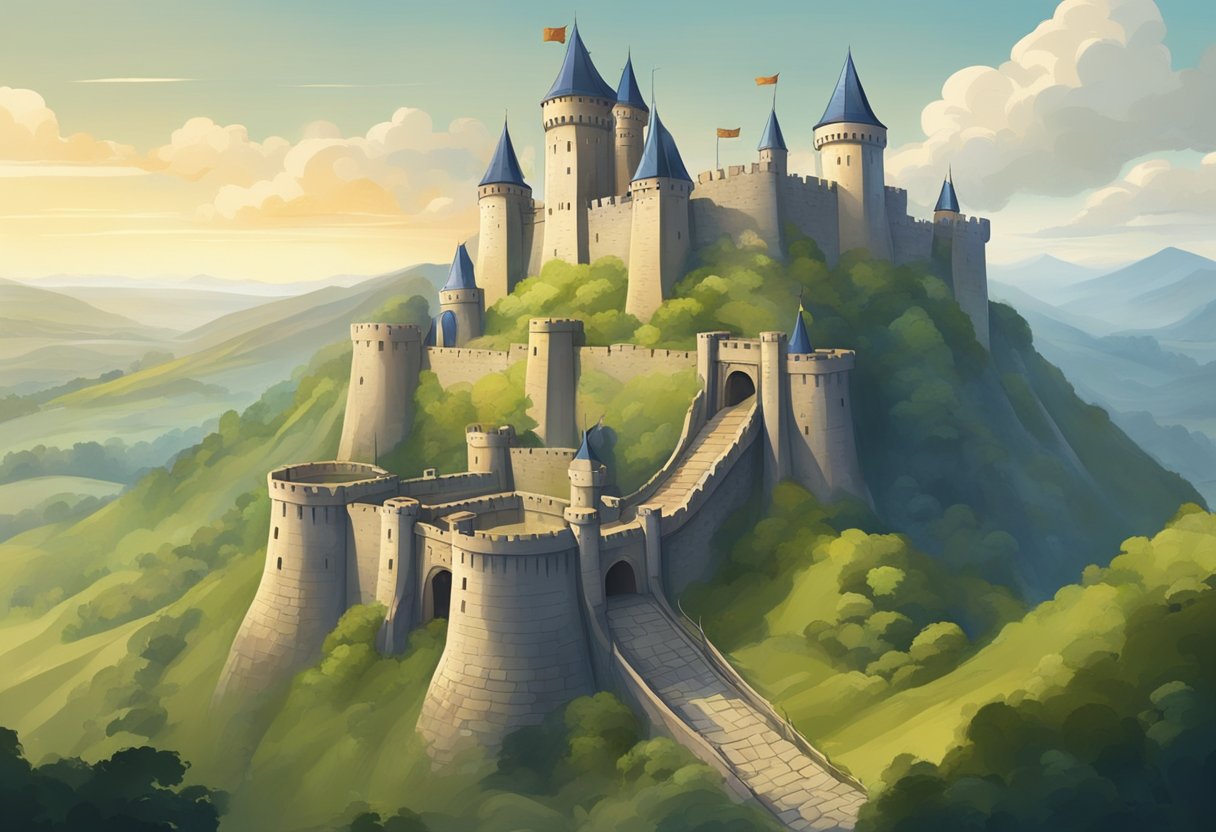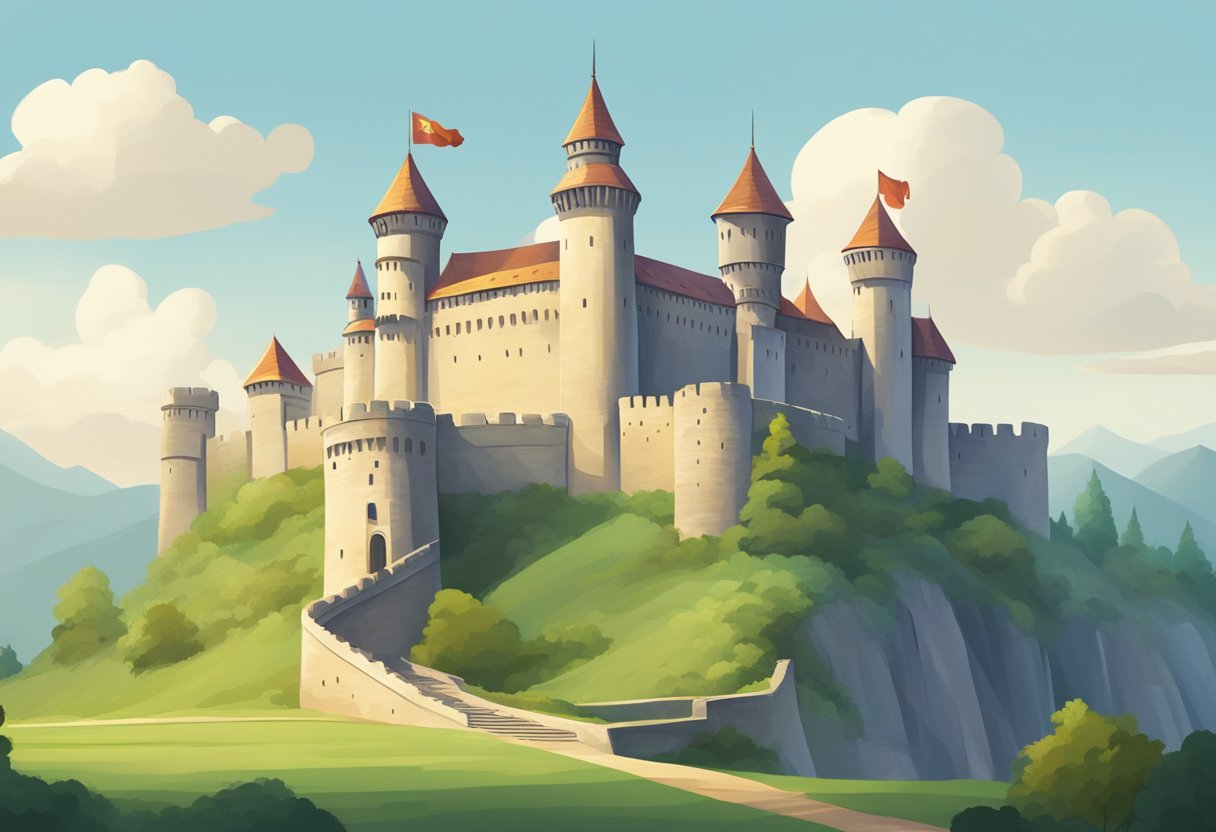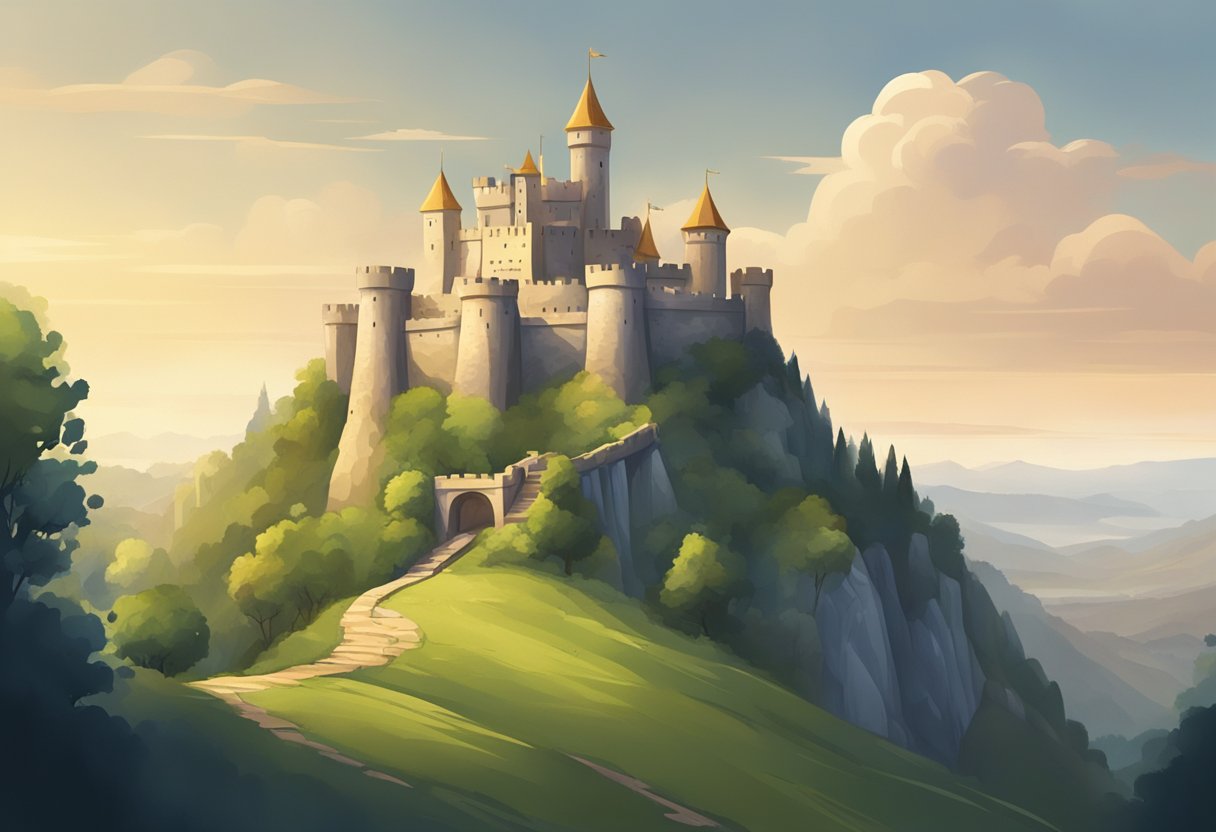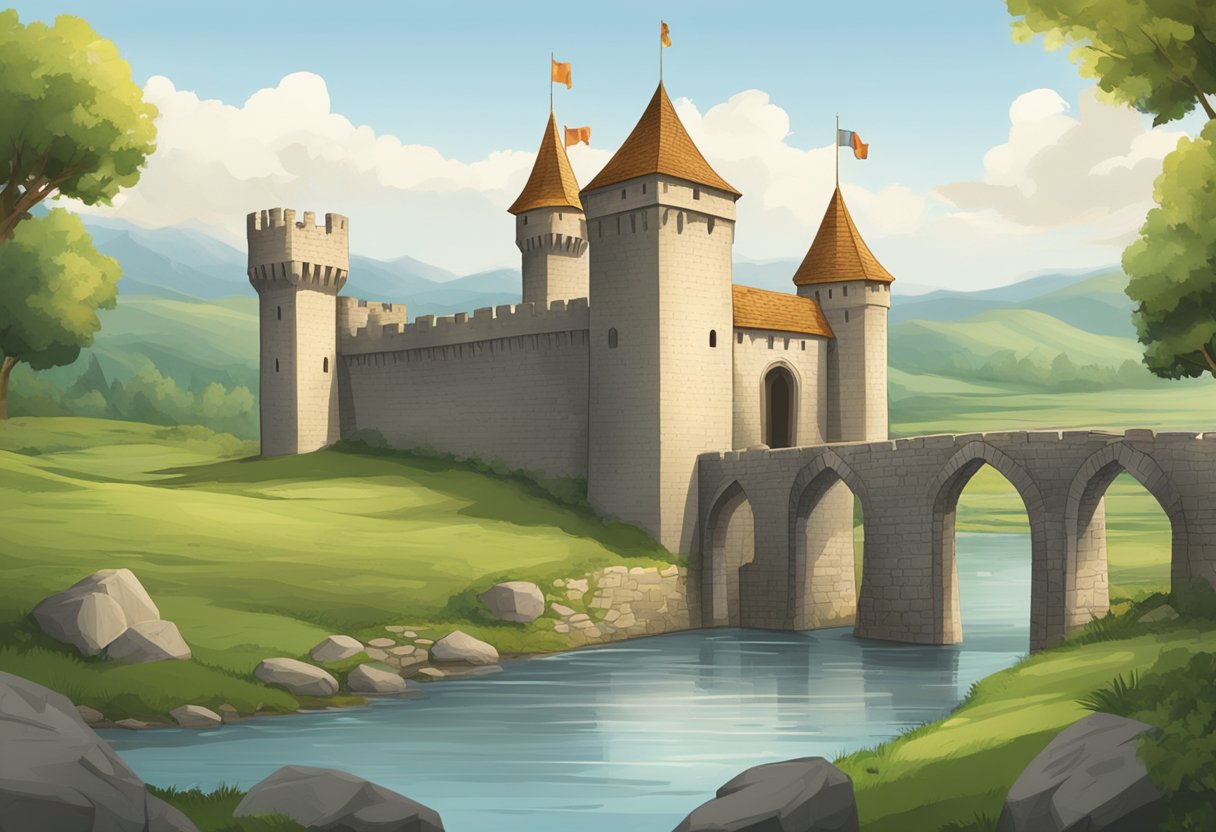Throughout the medieval period, castles dotted the landscape across Europe, each stone structure telling a tale of the times. These formidable buildings were not just the residences of kings and nobles; they served multiple roles that were crucial to the survival and progression of the societies that built them. Castles were the ultimate multitaskers of their day, providing safety and symbolizing status while also serving strategic purposes which were as complex as the architecture itself.

Understanding why these stone giants were erected leads to insights about medieval life, warfare, and politics. They were not solely about defense; they embodied the era’s cultural norms and values, reflecting the power dynamics of feudal systems and the ambitions of empires. Imagine a time when your home was your fortress, your status symbol, and your military command center, all crafted from the earth itself – the castle was this and more to our ancestors.
Key Takeaways
- Castles were multifunctional structures pivotal to medieval life.
- They symbolized social status and projected the power of their owners.
- Strategic positioning made castles key players in political and military histories.
Defense Mechanisms of Ye Olde Stone Fortresses
https://www.youtube.com/watch?v=wwv1uscR_84&embed=true
Castles weren’t just the medieval equivalent of a gated community; they were architecturally advanced fortifications designed to protect and intimidate. Riddled with both obvious and hidden defense mechanisms, these stone behemoths were far from welcoming to the uninvited.
Keeping Up With the Keep: Central Towers of Control
- Central Keeps: These were the command centers of castles, often the last refuge during a siege. Their vantage points provided a panoramic view for spotting trouble, while their thick walls laughed in the face of enemy catapults.
- Tall and Mighty: Keeps were intentionally tall, ensuring that even the most vertically-endowed invaders were left with severe neck cramping from looking up, plus high ground advantage for defenders.
Curtain Walls and Moats: Not Just Decorative Features
- Curtain Walls: Castles had these tall, continuous walls encircling them like an unfriendly hug, often outfitted with arrow slits for long-range archers.
- Moats: Not your average water feature; they were essentially ditches of despair, typically filled with water—or less hygienic liquids—to deter siege enthusiasts.
| Defensive Feature | Purpose |
|---|---|
| Curtain Walls | Encircle the castle, deterring attackers and providing a platform for defense. |
| Moats | A wet (or foul) deterrent for would-be attackers and a literal barrier to siege tower advances. |
The Art of Castle Sieges: Avoiding the Uninvited Party Crashers
- Avoid the Invite: Castles often featured murder holes and portcullises, making dropping by without an invite a deadly decision.
- Siege Warfare: Attackers would bring siege weapons like trebuchets, but castles were ready with walls meant to withstand bombardment and even defensive artillery of their own.
| Siege Breakers | Castle’s Comeback |
|---|---|
| Battering Rams | Met with sturdy gates and portcullises heavy enough to crush the spirit and bones. |
| Seige Towers | Thanks to the moat and high curtain walls, they often became costly treehouses. |
| Scaling Ladders | Greeted with a shower of arrows, hot oil, and an army of defenders aiming to ruin the climb. |
Symbols of Power and Prestige

Castles were more than just military strongholds; they were the medieval equivalent of a flashy sports car, showing off just how much clout and coin one had in the bank.
Noble Residences or Fancy Stone Piles?
Castles were not merely stone fortresses; they were palatial residences for the nobility. They shouted from the battlements, “Look at me! I’ve got land, a title, and a very expensive pile of rocks.”
- Nobles and Kings: These folks didn’t settle for a cozy cottage. A castle was their home address, replete with a great hall to throw the most talked-about banquets.
- Wealth and Power: The size and grandeur of one’s castle were direct indicators of one’s wealth and power. No self-respecting noble wanted to be caught living in a second-rate stronghold.
The Evolution from Wood to Stone: A Serious Upgrade
Upgrading from wood to stone wasn’t just following the trend; it was about making a statement that one is here to stay—permanently.
- Fortress to Palace: Over time, wooden motte-and-bailey castles underwent a home makeover to become stone fortifications. They transformed from modest military posts into full-blown symbols of power.
| Evolutionary Step | Significance |
|---|---|
| Wood to Stone | “My wealth isn’t flammable” |
| Adding a Chapel | “I’m pious and powerful” |
| Expansive Great Hall | “Feast your eyes… and everything else” |
Castles, with their imposing architecture and often including a chapel and a hefty garrison, became the ultimate power move in the game of medieval Monopoly.
Strategic Importance in Ye Grande Scheme of Things

When lords and monarchs rolled the dice on where to construct their strongholds during the Middle Ages, they weren’t just playing a game of Monopoly. They had their keen eyes on landscapes that would give them the upper hand in power plays and skirmishes.
Location, Location, Location: Hilltop Views and Defendable Positions
Castles weren’t just plonked down anywhere; like the grandmaster chess players of medieval real estate, the builders were particular about their plots. A prime piece of land often meant a hilltop, from which one could spy on advancing enemies as though they were on a reality show, courtesy of the castle’s lofty battlements.
Notable high-ground hoggers:
- Edward I’s Iron Ring of castles in Wales: These weren’t just any hilltops, these were the hilltops that offered the best 360 vision for overseeing and managing unruly subjects.
- The Romans weren’t slackers either, leaving behind elevated fortifications throughout the Empire, showcasing their prowess in selecting strategic locales that were simply ace for controlled chaos.
Hilltop Haven Pros:
- Panoramic Peeks: Seeing the enemy come from a mile away is better than a surprise party.
- Gravity’s Assist: Lobbing things downhill is much easier and requires none of that fancy siege equipment.
The Role of Castles in Military and Political Power Plays
As medieval Europe turned its countryside into a board game brimming with forts, castles were the knights and bishops of the land, often nestled at crucial crossroads or borders.
Key functions in the playground of medieval politics:
- Military Might: Castles were the ultimate strongman, bulging with soldiers ready to flex their strength in battles or deter would-be party crashers.
- Domination Debate Club: Noble families flaunted their control over regions from the comfort of their mighty keeps, while knights and vassals gathered round, ready to spread influence or gossip—whichever came first.
Given their knack for control, concentric castles flaunted layers upon layers of fortifications, basically the medieval version of a security system wrapped in a burrito of walls. It was the shell keep, however, that merged functionality with flair, a stylish choice for the medieval militarist who also appreciated a good architectural silhouette.
Castles Through the Ages: A Whimsical Walk Down History Lane

As they meander through history’s hodgepodge of architecture, one observes the castles’ evolution from humble mounds of earth to grandiose seats of power and prestige. They bear witness to adventures in stone and mortar, from Norman conquests to Renaissance refurbishments.
From the Norman Conquest to Renaissance Revamps: An Architectural Journey
The Normans didn’t waste any time after their infamous win at the Battle of Hastings in 1066. William the Conqueror launched a swift makeover of England’s visage with Motte and Bailey castles. These were swiftly erected wooden forts atop mounds (mottes) paired with enclosed courtyards (baileys). Their adaptability and ease of construction meant that Norman power was asserted fast, embedding the feudal system into the English shire like a sword in the stone.
- Dover Castle: This colossal guardian of the English Channel nods to the Norman penchant for grandeur. The omnipresent White Tower, a stone sentinel, sawed its way into the skyline under William’s watchful eye.
But change is the only constant. King Edward I transformed these timbered strongholds into the stone behemoths that dot the landscape like pensive giants. Cue the castles of Beaumaris and Harlech — complex, intimidating, and arguably Edward’s outlets for creative expression (if one considers throwing boulders at the enemy “creative”). These fortresses were no airy fairy constructions; they were as serious as a jester without a joke.
| Architectural Marvel | Notable Features |
|---|---|
| Beaumaris Castle | The very pinnacle of concentric design with watery moats for reflective contemplation (or defense, but that’s less poetic). |
| Harlech Castle | Perched on a cliff, as if trying an early version of the ‘Mannequin Challenge.’ |
Not Just in Ye Olde England: Castles Across the Land and Sea
English castles weren’t the only stars in the medieval sky. Head east and one would stumble upon the complex pagodas of Japan — feudal fortresses with a penchant for swooping roofs rather than flat battlements. These structures served up a delightful tea of military might and cultural sophistication.
Back in England, the Renaissance shook things up like a good old English trifle. You had Elizabeth I sprucing up Kenilworth Castle like it was the season premiere of “Pimp My Keep.” Beholding Kenilworth’s transformation is akin to watching a castle go through its punk phase—less about defense, more about opulent tudor windows and prancing around in fancy britches.
Meanwhile, away from English shores, China had its own empire-spanning version of a housing crisis. They opted for “walls over sprawl” with their Great Wall, which is less ‘castle-y’ but deserves a participation medal in the grand scheme of fortifications.


Leave a Reply